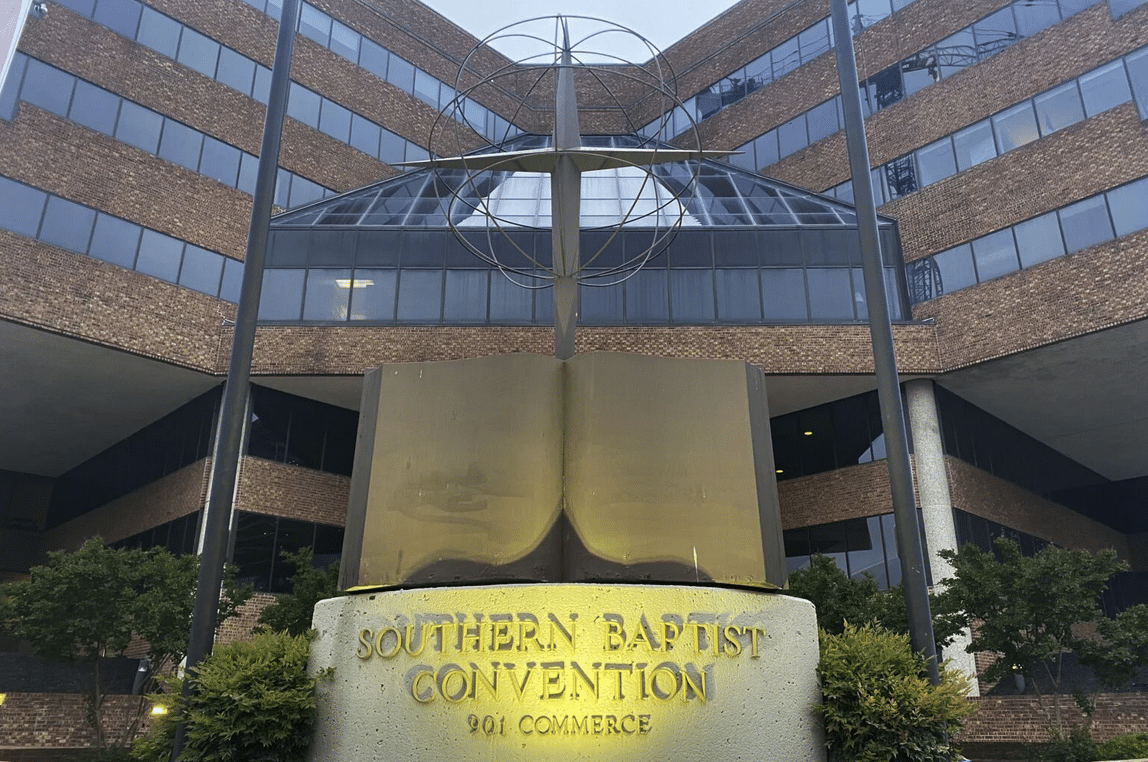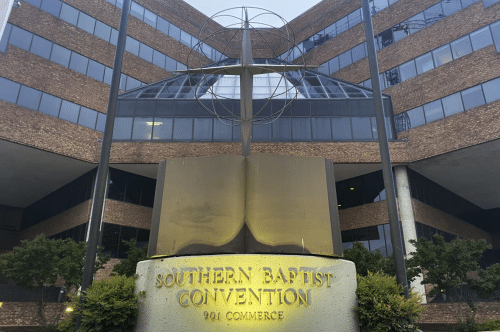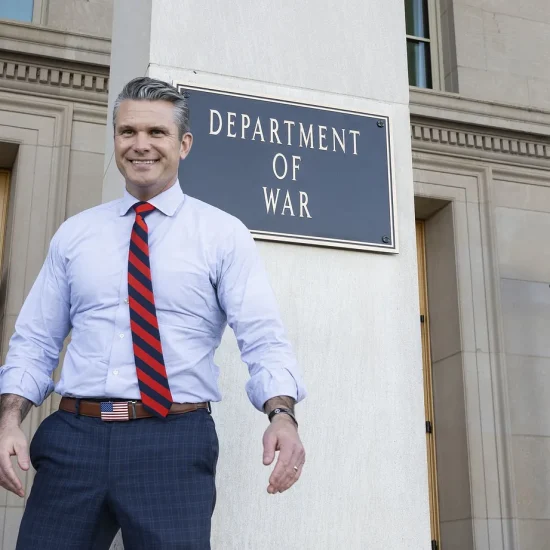
(RNS) — The bad news for Southern Baptists is that the denomination, the nation’s largest Protestant group, shrunk in 2023, with a drop of about a quarter-million people.
The good news, according to the Southern Baptist Convention’s annual statistical report, is that the decline slowed from 2022. In addition, of those who remained, more went to church and more newcomers took the plunge to get baptized.

A cross and Bible sculpture stand outside the Southern Baptist Convention headquarters in Nashville, Tennessee, on May 24, 2022. (AP Photo/Holly Meyer, File)
The SBC’s 2024 Annual Church Profile, released Tuesday (May 7), showed that membership dropped to 12.9 million members, the lowest since the late 1970s. Having peaked at 16.3 million in 2006, membership has been in decline ever since, with nearly 3.5 million members in total lost. About half of that total loss has come since 2018.
Weekly attendance at churches rebounded from the COVID-19 pandemic, topping 4 million per week, while small-group attendance was about 2.5 million. Donations at the denomination’s 46,000 churches also remained robust, topping $10 billion, feeding nearly $800 million into SBC national and international ministries.
The SBC’s churches also reported 226,000 baptisms, a key evangelism statistic held dear by Southern Baptists. About 175,000 new people joined SBC congregations in 2023.
Churches in Florida, Georgia, California, North Carolina, and Tennessee reported the largest increase in baptisms from 2022 to 2023.
Todd Unzicker, executive director-treasurer of the Baptist State Convention of North Carolina, said that churches in his state have focused on increasing baptism through training and a “fill the tank” initiative, which challenges congregations to fill up their baptismal tanks in the weeks before Easter. He said that while many churches often want to see more people baptized, few were prepared to baptize them.
“When I would visit churches, most of the baptistries were filled with Christmas decorations and boxes and supplies,” he said “And I always thought, if the Lord moved, they’re not even ready.”
“While we often address our shortcomings, it’s also good to pause and celebrate the global good Southern Baptists are accomplishing,” said Jeff Iorg, president-elect of the SBC Executive Committee. Iorg, the longtime president of Gateway Seminary in Northern California, was named the SBC Executive Committee’s leader in March.
Bart Barber, a Texas pastor and current president of the denomination, called the report encouraging news. Barber said that if membership at churches had risen without a rise in attendance or baptisms, he’d be concerned. Barber added that membership numbers can often be less accurate than baptisms or church attendance.
“The numbers that are up are the numbers I am watching,” Barber told Religion News Service. “We know who came to our Sunday school. We know who came to our small-group Bible study. And we are good at counting baptisms. We have walked people through a process and we have dunked them in water and we know their names. We can tie every one of those numbers to an individual person.”
Perhaps the most concerning data related to sexual abuse, an issue SBC leaders have struggled to handle effectively.
Along with membership, baptisms, and giving numbers, 29 of the SBC’s 41 state conventions also collect data on how their churches are addressing abuse. Fewer than two-thirds (58%) of churches in those states said they required staff and volunteers who work with kids to have background checks. Fewer than half (38%) said their staff and volunteers have been trained on how to report abuse, while fewer than a quarter (16%) have been trained on how to care for survivors of abuse.
Barber said that those numbers, especially the background check percentage, are not surprising. The average SBC church, relatively small and often in a rural setting, can rarely afford to support a full-time pastor or the staff, volunteers, and policies needed to prevent abuse. Those churches, the SBC president said, often have well-loved volunteers working with kids and think they are immune to abuse.
“But that’s wrong,” said Barber. “Abuse happens in rural churches too. It’s important to help churches like that see that they do need to take these precautions.”
The SBC’s 2-year-old abuse reform implementation task force hopes to have new training material for churches, including policy guidelines, ready to hand out at this year’s annual meeting in Indianapolis in June.
Some states have asked churches about their sex abuse prevention policies in the past but this is the first time those questions have been included in the national Annual Church Profile.
Bruce Frank, a North Carolina pastor running for SBC president, said that more data will be needed before leaders know whether the convention is making progress on reform. But Frank, who served on a previous task force set up to aid in investigating abuse, said background checks are a crucial part of making churches safer.
“For anybody who works with children and students, a background church is the basic, base-level safety requirement,” he said. “It’s a lot easier and quicker than it’s ever been before. We want everybody to take advantage of that for the safety and security of their ministries.”
SBC leaders have long encouraged churches to check volunteers and staff backgrounds, and the denomination passed a series of reforms in 2022 aimed at addressing sexual abuse. But those reforms, including a ministry check website to list abusive pastors and leaders, have largely stalled. No names have been added to the ministry check website and there is no permanent funding plan for abuse reforms. A new nonprofit established to oversee reforms has received little support for funding.









